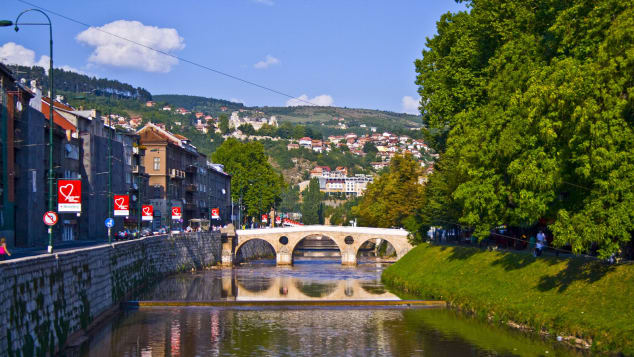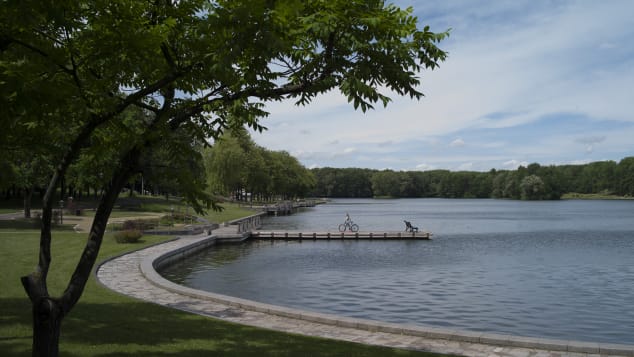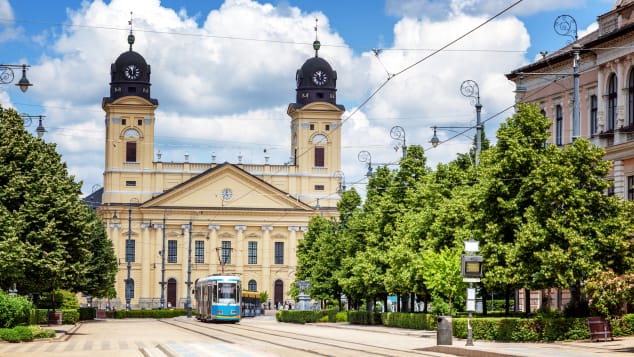Antwerp, Belgium
The UNESCO-protected
Cathedral of Our Lady dominates the Antwerp skyline, but there’s so much to this Belgian city than its most famous building.
Highlights include the diamond Square Mile, where travelers can get to the heart of an industry that’s been a core part of the city since the 15th century.
There’s also the
Red Star Line museum, located on Antwerp’s old docks, which uncovers the city’s past as a hub for migration to the United States in the late 19th and early 20th centuries.
The Hague, Netherlands
Laid-back city The Hague is far less crowded than Amsterdam.
As Amsterdam attempts to rein in tourists with plans to
close its Red Light District and impose strict rules on short-term lets, the Hague serves as a fabulous, low-key alternative for those still keen on a Dutch break.
The city boasts some of the Netherlands’ finest architecture, a pretty network of canals and, in the Mauritshuis, a museum to rival Amsterdam’s behemoth Rijksmuseum.
It’s also just 15 minutes away from the gorgeous Scheveningen beach resort.
Sarajevo, Bosnia
Sarajevo is filled with stand-out architecture.
Often snubbed for more popular destinations in neighboring Croatia, Sarajevo is a resurgent city brimful of culture and history.
At its heart is Baščaršija, the old market quarter that still buzzes with spice stalls, cafés and the fascinating Gazi Husrev-beg Mosque.
Visitors can learn about Sarajevo’s four-year-long siege during the 1990s civil war at the Tunnel of Hope and the
War Childhood Museum.
The derelict bobsled track from the 1984 Winter Olympics is also a stand-out sight — the nearby
Pino Nature Hotel offers superb views and first-rate Bosnian food.
Pristina, Kosovo
Kosovo’s capital is a quirky city with plenty to see and do.
The Kosovan capital isn’t usually at the top of many tourists’ destination wish lists, but that’s no reason not to visit this fascinating city.
While Pristina may have been synonymous with war 20 years ago, its undergone a major transformation since then, with various quirky buildings popping up.
The excellent Emin Gjiku Ethnographic Museum is well worth a morning of exploring, as is the superb
National Museum of Kosovo.
Pristina University’s unique library will fascinate architecture buffs, while those looking to cool off can find solace in the vast pool tucked away in Germia Park, located just north of the city.
Malmo, Sweden
Malmo is so much more than a day trip across the Oresund Bridge from Copenhagen.
The excellent
Moderna Museet Malmo is one of the best contemporary art galleries in Europe, while culture fiends will find succor at Malmöhus Castle, home to several museums focusing on the local area.
The city’s food scene rivals the nearby Danish capital — foodies should check out
Bloom in the Park and its “no menu'”concept, as well as the global offerings at Malmö Saluhall.
Meanwhile Ribersborg beach, located just a short walk from the city center, is a wonderful haven from the heat in high summer.
Aberdeen, Scotland
Few small cities in Europe pack a cultural punch like Wroclaw.
This western Polish city, on the banks of the Oder river, served as European Capital of Culture in 2016 and has plenty of attractions for art, architecture and history fanatics to marvel at.
Wroclaw’s main highlight is the 114-meter Panorama of Racławice, depicting the 1794 defeat of a Russian army by the Poles.
The beautiful Centennial Hall should also be on any itinerary, as should the Penitent Bridge between the towers of the Mary Magdalene Church.
No visit is complete without a day spent exploring the Gothic Old Town.
Tbilisi, Georgia
Romania’s second largest city is often seen as a stop off for travelers looking for outdoor adventures in the Apuseni Mountains, or those keen to witness Transylvania’s historic sights.
But the vast, Gothic St. Michael’s Church and the fascinating
Fabrica de Pensule, a working gallery and art space in a former paintbrush factory, are just two attractions that make a longer stay essential.
Throw in a thriving café and bar scene and pretty squares, and Cluj-Napoca has all the trappings of the ideal city break destination.
Debrecen, Hungary
Debrecen is a less crowded alternative to Budapest.
While Budapest has a deserved reputation as one of Europe’s most appealing cities, Debrecen is an excellent option for those seeking a less crowded Hungarian alternative.
Kossuth tér, the main square, is home to the impressive Calvinist Great Church and
Grand Hotel Aranybika.
Yet it’s beyond these major sights that the real action takes place.
The Old Town rewards those looking to get lost with excellent cafés and people-watching spots.
Keep an eye out for smaller spa hotels, with a chance to soak in thermal waters before heading to the nearby Great Plains.
Currently enjoying its time in the limelight as a European Capital of Culture, Plovdiv is Europe’s longest inhabited city.
As a result, it’s imbued with an inescapable sense of history, especially in the colorful Old Town.
The main draw here is the astonishing second-century Roman amphitheater, which wasn’t uncovered until the 1970s.
Another highlight is the Thracian ruins of Eumolpias, located just outside town and dating back 5,000 years.
Trondheim, Norway
This historic city was Norway’s first capital.
Located on the fjord of the same name, Trondheim is Norway’s third largest city.
However, with fewer than 200,000 residents, it’s decidedly uncrowded and easy to explore.
The famous Gothic cathedral is perhaps its best known sight, but the views across the water and around its vibrant harbor are just as impressive.
Trondheim is also known for its excellent microbreweries —
Den Gode Nabo is popular and a great place to start.
Turin, Italy
Turin is home to incredible sights like the Mole Antonelliana.
Venice’s struggles with tourist numbers have been well documented, but while still popular with travelers, nearby Turin is decidedly less congested.
Travelers can simply sip a coffee on the sidewalk, indulge in some of the country’s best cuisine and enjoy being away from the hordes in the country’s hot spots.
Source: https://edition.cnn.com/travel/article/beautiful-european-cities-few-tourists/index.html


























